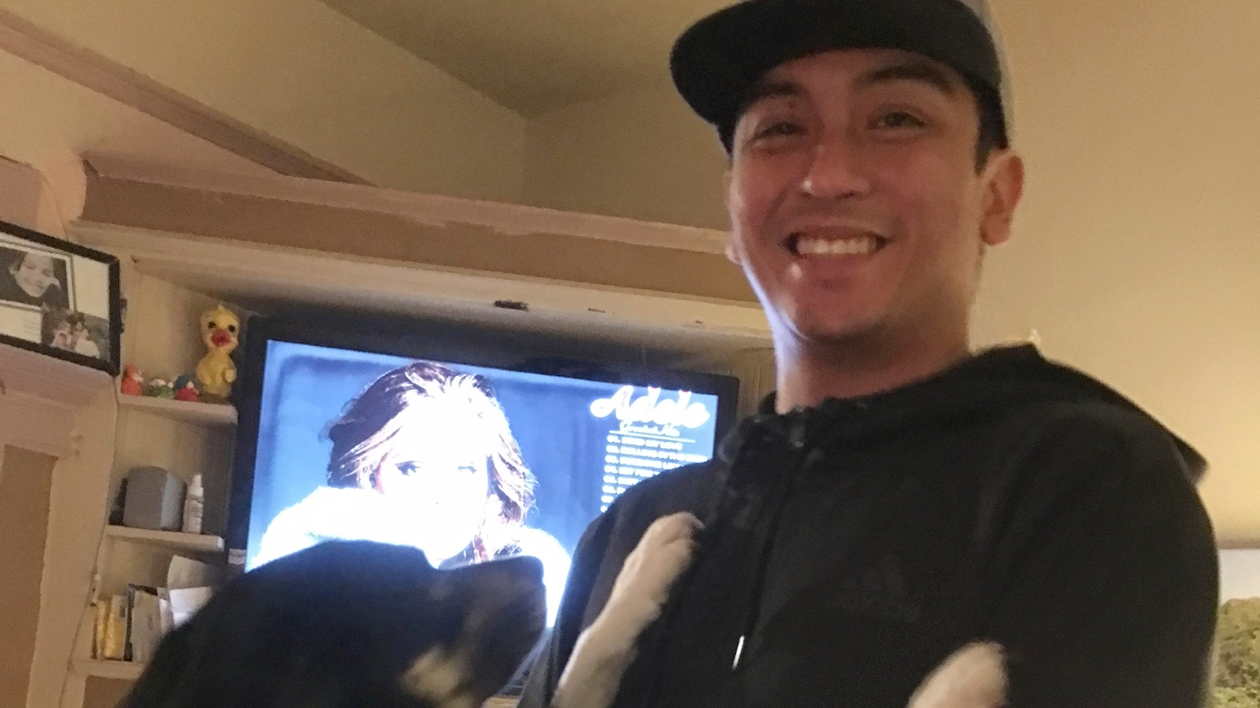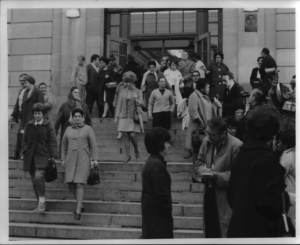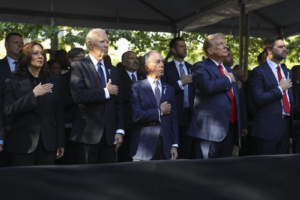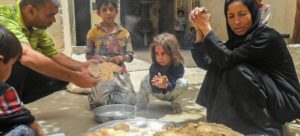The handcuffed man lies prone on the ground. Police officers crowd around, at one point kneeling on the man’s shoulder blade. A video is being filmed.
He cries out, “Please don’t kill me, please don’t kill me.” He is later taken away by officers to a hospital where he is pronounced dead.
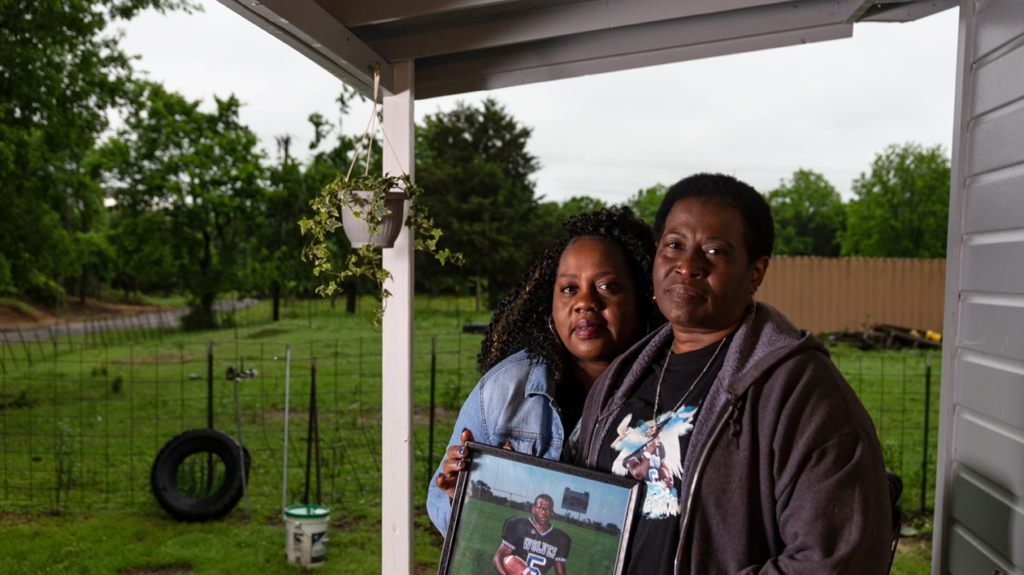
Those are not the final moments of George Floyd, a Black man who died May 25, 2020, after being restrained for more than nine minutes by Derek Chauvin, a white former Minneapolis police officer and now convicted murderer.
Rather, they describe the arrest of Angelo Quinto, 30, of Antioch, California, one of hundreds of other men and women of color who lost their lives as a result of interactions with police in the 12 months since Floyd’s death triggered a social justice movement targeting police reform and systemic racism.
While many Americans shouted Floyd’s name in the wake of his killing, fewer know the names of those who have died since. But by sharing stories of outrage, grief and even joy when remembering those who died, four families that spoke with USA TODAY said they hoped bringing greater visibility to their cases might reform a police system that disproportionately harms people of color.
In some of the cases, officers face murder charges. In others, their actions have been deemed within the law. In every case, family members say their loved ones did not deserve to die. They vow to pursue accountability so that others can be spared the same fate.
“We are Angelo’s voice now, and we will fight to get justice. He didn’t need to die,” said his mother, Cassandra Quinto-Collins, 52, who is an immigrant from the Philippines. “We do this so other families won’t go through what we are. No more, no more, no more.”
In 2020, 1,127 people were killed by police, according to data collected by Mapping Police Violence, a research collaborative that uses a variety of state and regional databases to determine the number and nature of most but not all police-involved deaths.
Just under 50% of those killed were white people, a demographic that accounts for 68% of the nation’s 330 million residents. In contrast, as COVID-19 disproportionately killed people of color, Black people represented 27% of all police deaths last year, although they are 13% of the population. Latinos comprised 21% of those killed and are 17% of the population. The database does not break out police deaths of Asian Americans and Native Americans.
Law enforcement supporters say that while some reforms are necessary, citizens should not discount the value of quality policing and the relative infrequency of excessive use of force. Justice Department statistics for 2018 show that of some 61 million people older than 16 who had at least one contact with police, 1% had a gun pointed at them, said Jim Burch, president of the National Police Foundation, a non-profit focused on improving policing.
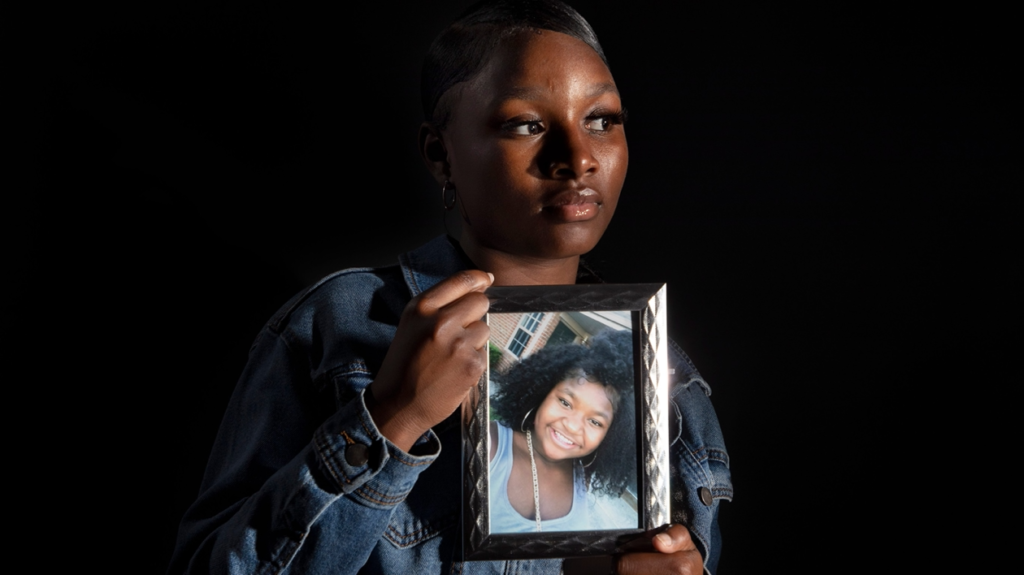
“While no one can deny that excessive force is a problem and in 2020 we saw this first-hand with the murder of George Floyd and the deaths of others, the majority of officers encounter the public every day without the use of force and in response to requests for their assistance,” said Burch.
As reforms are considered, everything from laws to management decisions “must not be overlooked or forgotten in the reimagination of policing, nor should the fact that thousands of officers serve with valor and integrity each and every day,” he said.
Few question that police work can be dangerous. In more than 70% of cases where police killed someone,the victim reportedly was armed with either a gun and or a knife. But, according to Mapping Police Violence, there is evidence that police response often does not fit the situation.
In 55 cases, police shot at a moving vehicle, killing the victim, a practice that reform advocates hope to ban. In 180 incidents, those killed reportedly were armed with a knife; in other countries, police are trained to employ other methods before opting to shoot in those situations. And 97 those killed were the subject of mental welfare checks, a trend that has led cities such as Eugene, Oregon, to dispatch mental health professionals instead of police officers to such calls.
In nearly 99% of all cases last year where police killed someone, officers were not charged with a crime.
The database shows that Black and Latino Americans stand out in this tally of death for being less likely to be armed or threatening when compared to white victims of police interactions.
That disturbing inequity has continued into 2021 and dates back years, said Elle Lett, a doctoral candidate at the University of Pennsylvania in Philadelphia and lead author of a report, which included scholars from Yale University in New Haven, Connecticut, titled “Racial Inequity in Police Shootings: 2015-2020.”
“It’s important to think of this data in the context of five years that were highly politicized and included more police departments using body cameras and civilians taking videos, and yet there was no decline in racialized violence by police,” said Lett. “This suggests that no matter what changes might be done at the local level, we need federal level regulations to reduce this violence.”
The House passed the 2020 George Floyd Justice in Policing Act in March. The legislation, supported by President Joe Biden, targets reforms that include redirecting funds to community-based policing programs and requiring data collection for all police incidents. It’s unclear when the Senate will vote on the measure, although Biden has set a deadline for Tuesday, which will mark one year since Floyd’s murder.
Lett said one obstacle for those researching police use of force is the lack of a national database that is fed directly by the nation’s thousands of police departments.
“We can only tell the stories of people who are counted,” Lett said. “But what about the uncounted?”
Here are a few stories of those who died during interactions with police since the day Floyd was killed on a Minneapolis sidewalk.
Strong and kind, Jonathan Price was ‘that kind of kid’
The big old tractor tire does it every time. It sits there in Marcella Louis’ backyard, weeds creeping up around its rubber edges. When she looks at it, the tears come fast.
Her son, Jonathan Price, 31, would spend hours in her Wolfe City, Texas, yard flipping the heavy tire to build his physique. Price, who played football in high school and college, had started a personal training business in Dallas but returned to his hometown to help his ailing mother, father and grandmother. “He was that kind of kid,” said Louis, who is Black.
One night last October, Price tried to break up a dispute between a man and a woman when police arrived. One officer, Shaun Lucas, who is white, attempted to detain Price, who “resisted in a non-threatening posture and began walking away,” according to the Texas Department of Public Safety.
Moments later, Price was shot dead. Lucas has been charged with murder and pleaded not guilty. Lee Merritt, a civil rights attorney running for Texas attorney general, has filed a wrongful death suit on the family’s behalf.
“I never imagined this would happen in our small town, a place where police usually come and introduce themselves to you,” Louis said. “It’s a nightmare and I ain’t woke up yet.”
Louis said in Wolfe City, a town about 70 miles northeast of Dallas with a population of 1,300, Black and white people “are all together,” which makes her son’s shooting by a white officer all the more wrenching. While she was glad to hear that a jury convicted Chauvin for Floyd’s murder, she did not pay much attention to the trial.
“It’s not like we don’t care about what’s happening in the world and all the other people who died, but we pray for our little family,” she said.

Mother’s Day came and went recently. It was a day when Louis would always get a gift from her son. But not this year. And never again.
“That just breaks my heart,” she said.
Instead, she hopes to be the one giving a gift soon. Louis wants to raise money to create a small scholarship in her son’s name aimed at helping a promising young Wolfe City High School football player.
“When he was a kid going to school there, he’d always help other players out, training them, coaching them, even kids that no one else seemed to like,” she said. “A scholarship to help some kid, that’s what he would want.”
‘I called police because I trusted them’
A half-hour before a verdict was announcedin the Chauvin trial, a police officer in Columbus, Ohio, responding to a 911 call pulled up to a foster home to find a young girl with a knife approaching two women.
Seconds later, the officer fired four shots at Ma’Khia Bryant, 16, who soon died. Not longer after, news of the Chauvin verdict crackled over the police car’s radio.
Those seconds remain painfully vivid for Ja’Niah Bryant, 15, who made the call to 911.
“I called police because I trusted them to help me,” said Bryant, who is Black, adding that she had called the police on past occasions related to tense moments with older female residents of the foster home the two sisters temporarily shared. “Now, I’d rather handle any situation by myself instead of calling them.”
Ma’Khia Bryant’s death was noticed nationally, if briefly, due to both its timing and the victim’s age. Ja’Niah Bryant said she was pleased when a number of singers and other celebrities tweeted their sympathies. But these days, life seems to have moved on.
Attorney Michelle Martin is representing the family. Following the incident, the Fraternal Order of Police praised the responding officer, Nicholas Reardon, who is white, for stepping into a chaotic situation and preventing the possible deaths of the girls Ma’Khia Bryant was charging with the knife.
The Ohio Bureau of Criminal Investigations continues to investigate the incident. Ja’Niah Bryant isn’t counting on consequences.
“The day my sister was murdered, the police officer who killed George Floyd was pronounced guilty, and that was a shock to me because a lot of people are killed by police and the police usually just get off,” she said.
For the moment, Ja’Niah Bryant simply tries to keep her sister’s memory alive. She cracks herself up remembering how the two of them would make fun of their beloved grandmother, with whom they had once lived and hoped to live with again.
“We’d always be laughing and goofing off together, like when there would be a video on and Grandma would start dancing, and we’d just say, ‘Grandma ain’t got no rhythm,'” Bryant said.
This September, Ma’Khia Bryant would have turned 17, and her sister still plans to celebrate with a party.
“She liked girlie stuff and clothes and shoes and doing her hair with headbands and butterfly clips,” she said. “So we’ll do that.”
Ja’Niah Bryant also hopes her sister’s death results in changes that might prevent another such tragedy. Police often employ a range of de-escalation tactics when suspects have a knife. Those include isolating the person with a police car or using a weapon other than a firearm.
“What that officer did was not right, there were other ways to handle it, he could have Tased her, or tackled her,” Ja’Niah Bryant said. “He just pulled up and did what he did.”
She said she understands the looting that some cities saw in the wake of Floyd’s death last spring but implores those fighting for justice to take to the streets in peaceful protest.
“We all need to march together for what’s right,” she said. “If we get enough people to speak and protest, there will be change. When I grow up, maybe before I die, maybe there will be a law in my sister’s name that helps others.”

Sincere Pierce was ‘the best dancer’
Cynthia Byrd-Green had a terrible feeling. After her adoptive son Sincere Pierce, 18, left her Cocoa, Florida, house oneNovember morning to get into his friend’s car, she noticed a police car immediately follow the vehicle. She hopped into her car to tail the police and make sure nothing happened.
Instead, her worst fears were realized. In a span of minutes, the police officers attempted to stop the car because it was similar to one that had been reported stolen. When the driver, Angelo Crooms, 16, did not stop, Brevard County deputy Jafet Santiago-Miranda, fired at the vehicle, killing both Crooms and Pierce. A third boy was unharmed.
After reviewing the incident, state attorney Phil Archer, declined to file charges against the deputy, saying he was within his right to shoot after Crooms declined to stop and accelerated toward the officer. His family’s attorney, Natalie Jackson, has filed a wrongful death suit against the city. Byrd-Green insists justice must be done.
“I want to see the officer locked up and go to jail,” she said. “Everyone saw George Floyd murdered on video; they saw it with their own eyes. That was murder, just like what the cop did to my son. I call it execution. He shot that boy in the head.”
Byrd-Green, 63, has been vocal around her Central Florida town, leading marches and fielding interviews. Only by being strident in the push for justice will change happen, she said.
“Floyd’s daughter said, ‘My daddy’s gonna change the world,’ and while that’s true, we need more people to get out there pushing for what’s right,” said Byrd-Green.
While many in Cocoa took to the streets to protest when Floyd was killed, Pierce’s death did not generate the same outpouring.
“My son lived right here, and I didn’t see those people come out,” she said. “But they were both Black, both killed by police.”
Nearly two decades ago, she received a phone call saying she had a few hours to claim her jailed niece’s newborn or he would be placed with another family. She and her husband raced to Walmart to buy a car seat and then picked up Pierce, whom they nicknamed Spud.
Byrd-Green goes silent when asked what she remembers most about her son. Then softly, she said: “Just the way Spud was always laughing, saying how he was the best dancer, singing, just being himself.”
Spud lives on in her memory, and in the graveside memorial she erected that includes flowers and a photo. The other day, vandals broke up the little shrine and left bullet casings strewn about.
“When I went there to clean up, I broke down and cried,” she said. “What harm can he do anyone now, he’s dead?”
‘We want cops to bring us peace’
In California, Bella Collins is haunted by the phone call she made when her brother began to once again act paranoid, eventually tightly locking his arms around their 4-foot-11 mother.
The end result of that 911 call was Angelo Quinto’s death three days later after leaving the family home unconscious.
“I feel guilt about it every day,” said Collins. “My mom said to call my dad, but he was 30 minutes away. So I thought police would get here faster. No matter how much brutality you see in the news, it doesn’t seem plausible it will happen to you, in your home.”
The Quinto-Collins family, immigrants from the Philippines, are helping push for local reforms to ensure that what happened to their son is not repeated.
In March, Antioch’s City Council approved a $1.4 million expenditure to purchase body and in-car cameras for local police, who were among the only officers in the Bay Area still without such devices. Mayor Lamar Thorpe has also proposed the deployment of two-person mental health response teams instead of police officers.
“We don’t want cops who are executioners, we want cops to bring us peace,” said Robert Collins, 52, Quinto’s stepfather. “When you look at what happened to George Floyd and later to Angelo, you think, this cannot happen in our nation. It has to be corrected.”
Cassandra Quinto-Collins still recalls the joy that her son took in telling her that he “was a veteran,” a reference to his attending Navy boot camp. Four days before graduating, he had an allergic reaction and was honorably discharged, his family said.
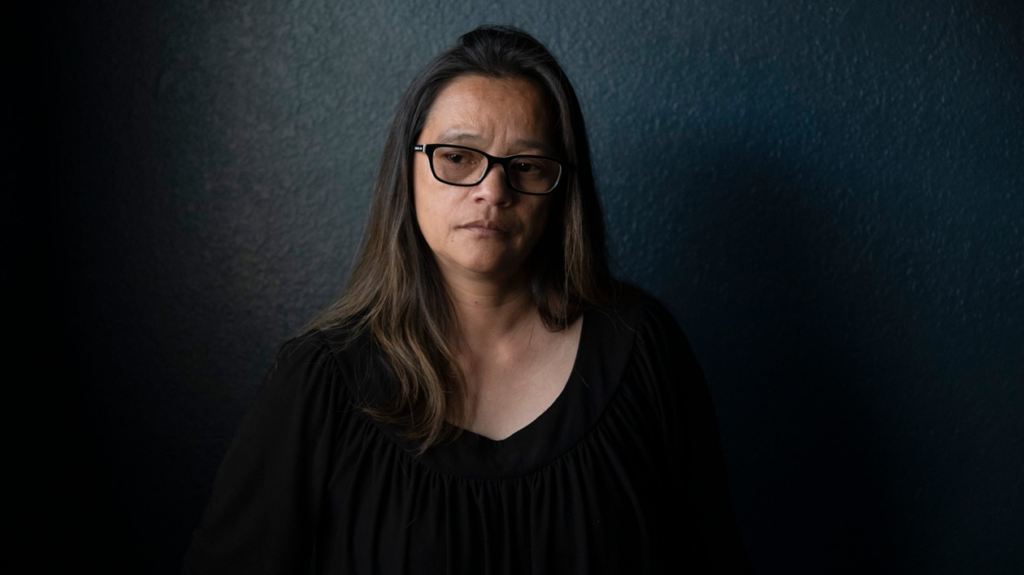
Robert Collins, who is Latino, remembers his stepson as “a very dynamic human being, very artistic.” He held a range of jobs, including video game designer, messenger and food service worker. But Quinto also had depression and anxiety, a condition that worsened after he fell and hit his head in January 2020.
“He started to get really afraid, he’d come out of his room to see us and ask us what we were doing, he had to watch us all the time,” said Bella Collins. “He’d look far off and flinch and say, ‘What’s happening, am I going to die?’”
The night of the incident, Quinto once again started acting erratically, eventually grabbing his mother in a tight grip.
When the officers arrived, they separated the two of them and put Quinto on the floor.
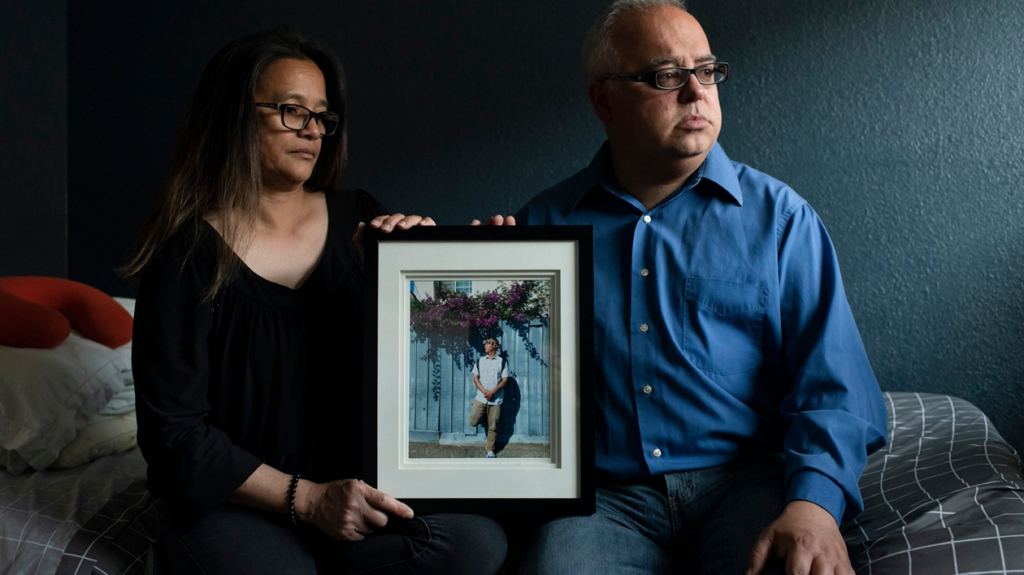
His mother started to film the event with her camera, but its lens was facing the wrong way throughout most of the event. In contrast to police version of events, she insists the officers had their knee on her son’s neck for nearly five minutes. By the time paramedics arrived, Quinto was unresponsive. The family says Quinto died from “positional asphyxia.”
John Burris, a civil rights lawyer representing the family, has filed a wrongful death suit against the city of Antioch, just east of San Francisco. Police chief Tammany Brooks, has said there was no evidence of strangulation or crushed airways and officers used approved techniques. The family believes otherwise and has no plans to relent.
“When I’m alone now and think about that night, I just wish I had done something different,” said Quinto-Collins, adding that she never felt in danger from her son.
“It’s like I failed him. I was there, watching all this happen,” she said. “He was not a threat. He was on the ground, in handcuffs, on his stomach, not moving. Here I was thinking, ‘The police must know what they’re doing,’ because I trusted them. And now he’s gone.”

